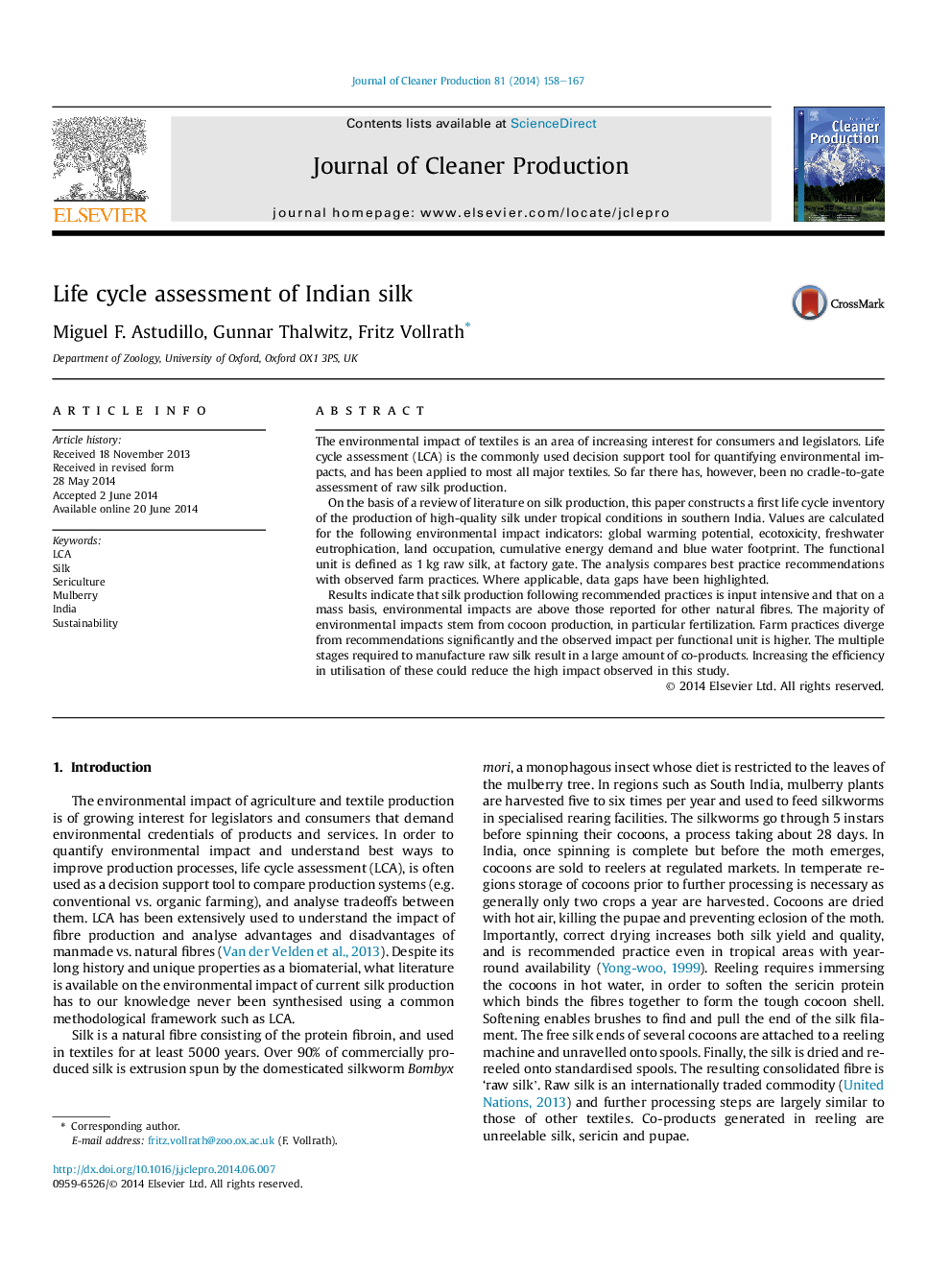| Article ID | Journal | Published Year | Pages | File Type |
|---|---|---|---|---|
| 8105800 | Journal of Cleaner Production | 2014 | 10 Pages |
Abstract
Results indicate that silk production following recommended practices is input intensive and that on a mass basis, environmental impacts are above those reported for other natural fibres. The majority of environmental impacts stem from cocoon production, in particular fertilization. Farm practices diverge from recommendations significantly and the observed impact per functional unit is higher. The multiple stages required to manufacture raw silk result in a large amount of co-products. Increasing the efficiency in utilisation of these could reduce the high impact observed in this study.
Related Topics
Physical Sciences and Engineering
Energy
Renewable Energy, Sustainability and the Environment
Authors
Miguel F. Astudillo, Gunnar Thalwitz, Fritz Vollrath,
